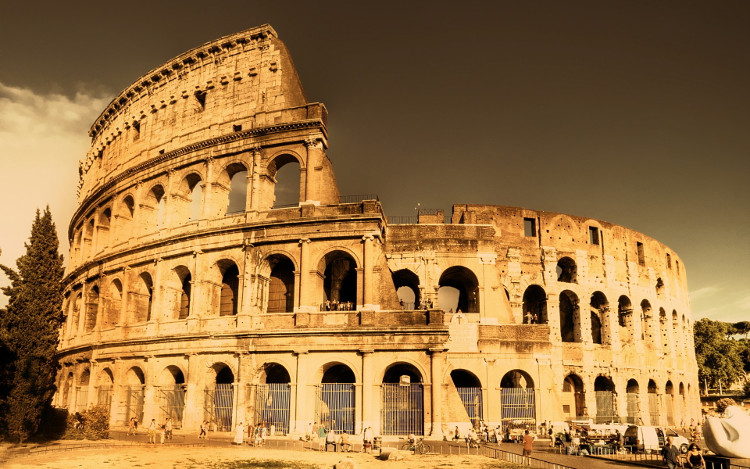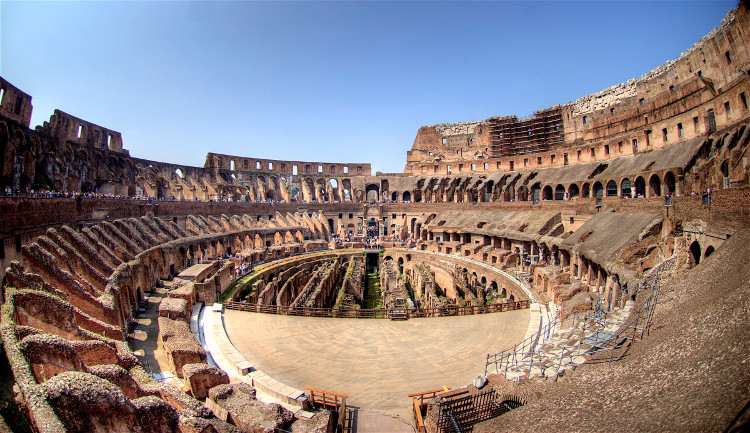Things you didn't know about the Colosseum
There are very interesting little secrets about this great work.
What is the Colosseum?
The Colosseum is a large arena in the city of Rome, built around 70 and 72 AD under the Vespasian emperor. Through many ups and downs of history, the arena still remains there as a masterpiece of time.

Colosseum Arena.
The process of building the Roman arena
The construction of Colosseum began under the Emperor Vespasian around 70-72, and was completed in 80 under Titus. Consecutive works were adjusted under the reign of King Domitian. After the great fire of Rome in 64 AD, the arena was abandoned and the Domus Aurea was built by Emperor Nero at the site. After years of construction and collapse due to earthquakes and war, more or less changes were created and formed a Colosseum arena today. With more than 2000 years of age, the Roman arena deserves its title "Historical Witness" .
The Roman arena was originally designed to accommodate 50,000 people. Later, the architects expanded the design, increasing the capacity of this project to 55,000 people. The main use of the arena is to make fighters' arena. It is estimated that more than 500,000 people and more than 1 million animals die when participating in bloody mortal games in the Roman arena to entertain everyone during this time of work.

When intact, the outer perimeter of the arena is 545m.
It is also used for public performances, false drills on the sea, animal hunting, classic plays. Many festivals held in the Roman arena last up to 100 days. Sometimes the Romans made the Roman arena flooded to make it a place for exciting naval battles to entertain everyone. This work was gradually used as a place of medieval entertainment. Later, the arena is used for housing, shops, religions, radio stations .
When intact, the outer perimeter of the arena is 545m. When built, 100,000m of travertine stones were used together with 300 tons of iron clamps. The Romans used more than 25,000m of mortar and gravel to mix into a concrete, while using more than 1 million different sized bricks in this project. The money used to build Colloseum was taken from the spoils in the war with the Jews in 66 to 73. About 50,000 pounds of silver and gold were collected from the temple in Jerusalem.
The audience who came to watch the competition also received a ticket like the tickets to today's stadium. The ticket clearly states the port number, the floor number, the number of seats and the number of seats they are seated. It can hold up to 50,000 to 80,000 people and is designed so well that every person can get out of this building within minutes.

The dome above the ground floor creates 80 entrances to crowded places.
The secret lies in the ingenious use of rolling arches, corridors and steps leading to seats. The arches on the ground floor create 80 crowded entrances, each with a numbered entrance that helps guests find their seats. A giant canvas shading from the rain cover is often stretched out above to cover the sun and during night shows, a huge iron chandelier hangs above the arena.
However, over the centuries, it was damaged by the natural impact (earthquake). The northern perimeter of the Arena remains intact with the restoration of the 19th century. The rest of Coloseo today is the original wall as it was being built.
- Pisa Leaning Tower - Strange architecture of the world
- The Colosseum subsided 38cm
- Discover interesting surprises about the Colosseum
- Discover the miniature Colosseum arena of the Roman emperor
- Found erotic paintings from Roman times
- NASA movie screening confirms no
- Bad things always remember longer than good
- 12 horrible things about China you may not know
- 10 interesting things about life you may not know
- 9 things are more important than money
- 10 interesting things about nature you may not know
- Women do many things at the same time better than men
- The appearance of 7 new and old wonders of the world
 'Fine laughs' - Scary and painful torture in ancient times
'Fine laughs' - Scary and painful torture in ancient times The sequence of numbers 142857 of the Egyptian pyramids is known as the strangest number in the world - Why?
The sequence of numbers 142857 of the Egyptian pyramids is known as the strangest number in the world - Why? History of the iron
History of the iron What is alum?
What is alum?